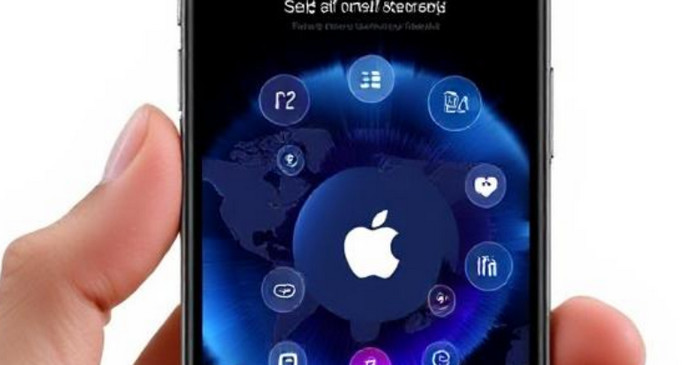Apple Maps has undergone a dramatic transformation since its rocky launch in 2012. What was once criticized for inaccuracies and lack of features is now a powerful navigation tool competing with Google Maps. With its latest updates, Apple Maps introduces **new ways to explore cities, navigate roads, and discover hidden gems**—all while prioritizing privacy and seamless integration across Apple devices.
This in-depth guide covers:
1. **The Evolution of Apple Maps** – From failure to innovation.
2. **New Features in Apple Maps** – Enhanced navigation, 3D city views, and more.
3. **Why Apple Maps is Now a Google Maps Alternative** – Privacy, design, and ecosystem advantages.
4. **How Travelers and Daily Commuters Benefit** – Real-world use cases.
5. **The Future of Apple Maps** – Upcoming features and AI enhancements.
By the end, you’ll see why Apple Maps is worth using—and how it can change the way you navigate the world.
—
## **Part 1: The Evolution of Apple Maps – From Failure to Cutting-Edge**
### **2012: A Disastrous Launch**
Apple Maps debuted with iOS 6, replacing Google Maps as the default iPhone mapping service. The launch was plagued by:
– **Inaccurate directions** (misplaced landmarks, wrong routes).
– **Missing public transit data**.
– **Poor satellite imagery** (blurry or distorted views).
The backlash was so severe that **Tim Cook publicly apologized** and even recommended competitors like Google Maps.
### **2015–2019: Rebuilding from the Ground Up**
Apple took drastic steps to improve Maps:
– **Sent camera-equipped vehicles** to collect street-level data (similar to Google Street View).
– **Partnered with third-party providers** (Yelp, OpenStreetMap) for better POI (Point of Interest) data.
– **Introduced Flyover** (3D city models) and **lane guidance** for highways.
### **2020–Present: A New Era of Apple Maps**
The biggest leap came with **iOS 15 and later updates**, featuring:
✔ **Detailed city experiences** (3D landmarks, enhanced road details).
✔ **Augmented Reality (AR) walking directions**.
✔ **Multi-stop routing** (finally!).
✔ **Privacy-first approach** (no tracking for personalized ads).
Today, Apple Maps is **faster, more accurate, and visually stunning**—especially in supported cities like New York, London, and Tokyo.
—
## **Part 2: New Features in Apple Maps (2024 Updates)**
### **1. **Detailed 3D City Views & Enhanced Navigation**
Apple’s **”City Experience”** now covers **50+ global cities**, offering:
– **Photorealistic buildings** (e.g., the Eiffel Tower, Sydney Opera House).
– **Custom-designed landmarks** (easier to recognize).
– **Elevation data** (helpful for hilly cities like San Francisco).
– **Real-time traffic lights & stop signs** (in select cities).
**Why It Matters:**
– More intuitive navigation (especially in dense urban areas).
– Better trip planning with visual landmarks.
### **2. **Multi-Stop Routing (Finally!)**
A long-awaited feature, **multi-stop trips** allow users to add multiple destinations (e.g., gas station, coffee shop, then work).
**How to Use It:**
1. Enter your main destination.
2. Tap **”Add Stop”** to include detours.
3. Drag to reorder stops as needed.
**Ideal For:**
– Road trips
– Errand runs
– Delivery drivers
### **3. **AR Walking Directions (iOS 17+)**
Using your iPhone’s camera, Apple Maps can now **overlay directional arrows in real-world view** to guide pedestrians.
**Best Uses:**
– Navigating complex areas (train stations, malls).
– Finding the right building entrance.
### **4. **Real-Time Transit & Bike Routes**
– **Live transit updates** (delays, crowdedness indicators).
– **Bike-friendly routes** (with elevation info to avoid steep hills).
### **5. **Privacy-Focused Location Services**
Unlike Google Maps, Apple:
– Doesn’t track your movements for ads.
– Uses **on-device processing** for location history (if enabled).
– Offers **”Sign in with Apple”** for third-party app integrations.
—
## **Part 3: Why Apple Maps is Now a True Google Maps Alternative**
| **Feature** | **Apple Maps** | **Google Maps** |
|——————|————–|—————|
| **Privacy** | ✅ No ad tracking | ❌ Tracks for ads |
| **3D City Views**| ✅ Stunning detail | ❌ Less polished |
| **AR Navigation**| ✅ Built-in | ❌ Limited |
| **Multi-Stop Trips**| ✅ Yes | ✅ Yes |
| **Offline Maps** | ❌ Limited | ✅ Yes |
| **Public Transit**| ✅ Good (varies) | ✅ Excellent |
| **Business Listings**| ✅ Improving | ✅ Best |
### **Who Should Use Apple Maps?**
✔ **iPhone users** (deep iOS integration).
✔ **Privacy-conscious travelers**.
✔ **Drivers in supported cities** (best for U.S., Canada, Europe).
### **Who Should Still Use Google Maps?**
✔ **Android users**.
✔ **Those needing offline maps**.
✔ **Riders in areas with weak Apple Transit data**.
—
## **Part 4: How Travelers & Commuters Benefit**
### **For Travelers:**
– **Flyover Tour Mode** – Virtual city tours before visiting.
– **Guides** – Curated recommendations (restaurants, attractions).
– **Real-Time Airport Info** – Gate changes, security wait times.
### **For Daily Commuters:**
– **Siri Suggestions** – Predicts when to leave for work.
– **CarPlay Integration** – Smoother than Google Maps in Apple Cars.
– **Speed Trap & Hazard Alerts** (crowdsourced from other users).
—
## **Part 5: The Future of Apple Maps**
Apple is investing heavily in:
– **More 3D city expansions** (Asia, South America).
– **AI-powered route optimization**.
– **Indoor maps for malls & airports**.
– **Potential glasses integration (Apple Vision Pro)**.
—
## **Conclusion: Should You Switch to Apple Maps?**
✅ **Yes, if:**
– You value privacy.
– You’re deep in the Apple ecosystem.
– You live in a supported city.
❌ **Stick with Google Maps if:**
– You rely on offline maps.
– You need global transit data.
**Final Verdict:** Apple Maps has evolved into a **powerful, privacy-first alternative**—worth trying for iPhone users.
Would you like a step-by-step guide on using these new features? Let me know!


